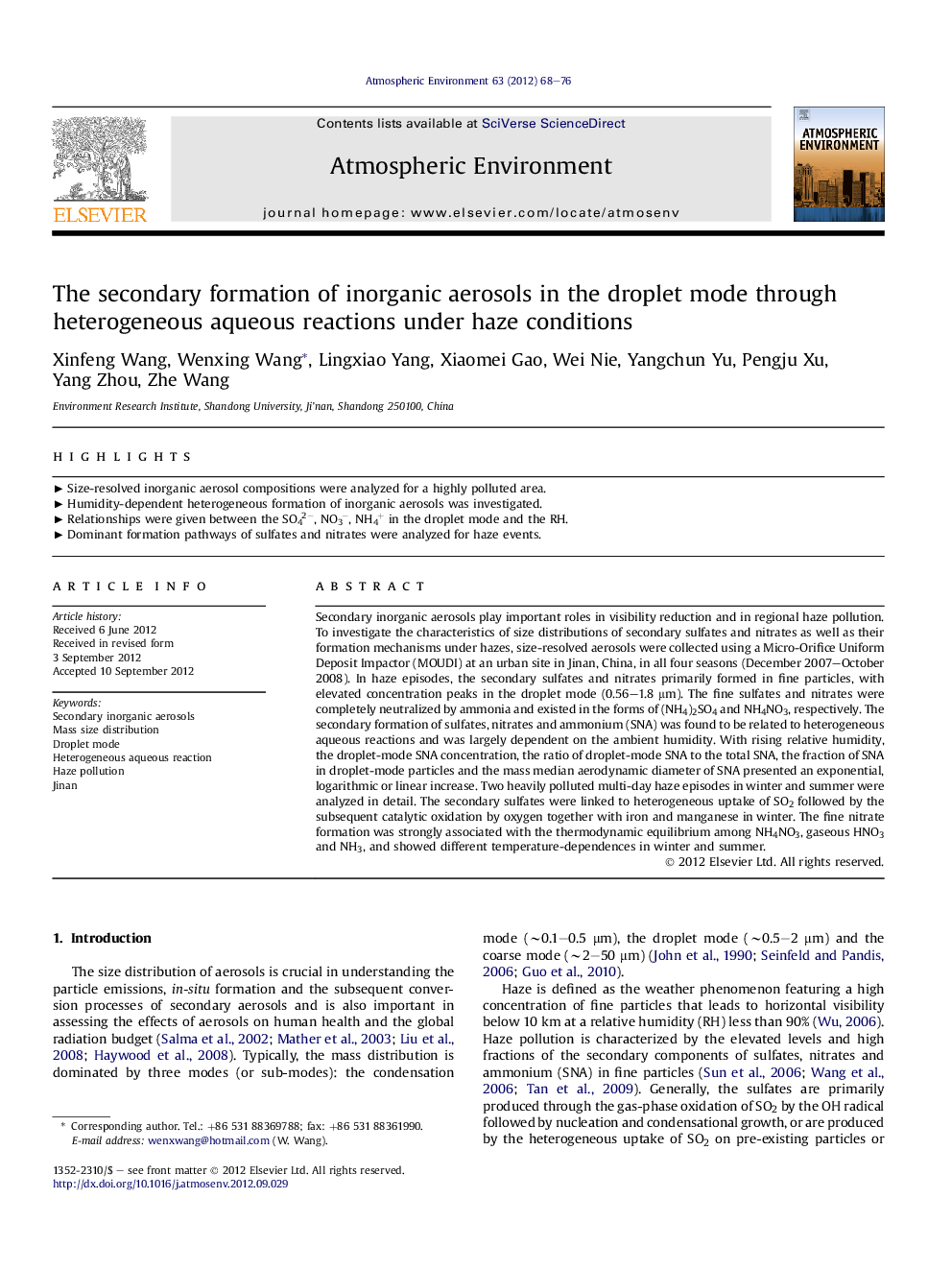| Article ID | Journal | Published Year | Pages | File Type |
|---|---|---|---|---|
| 4438598 | Atmospheric Environment | 2012 | 9 Pages |
Secondary inorganic aerosols play important roles in visibility reduction and in regional haze pollution. To investigate the characteristics of size distributions of secondary sulfates and nitrates as well as their formation mechanisms under hazes, size-resolved aerosols were collected using a Micro-Orifice Uniform Deposit Impactor (MOUDI) at an urban site in Jinan, China, in all four seasons (December 2007–October 2008). In haze episodes, the secondary sulfates and nitrates primarily formed in fine particles, with elevated concentration peaks in the droplet mode (0.56–1.8 μm). The fine sulfates and nitrates were completely neutralized by ammonia and existed in the forms of (NH4)2SO4 and NH4NO3, respectively. The secondary formation of sulfates, nitrates and ammonium (SNA) was found to be related to heterogeneous aqueous reactions and was largely dependent on the ambient humidity. With rising relative humidity, the droplet-mode SNA concentration, the ratio of droplet-mode SNA to the total SNA, the fraction of SNA in droplet-mode particles and the mass median aerodynamic diameter of SNA presented an exponential, logarithmic or linear increase. Two heavily polluted multi-day haze episodes in winter and summer were analyzed in detail. The secondary sulfates were linked to heterogeneous uptake of SO2 followed by the subsequent catalytic oxidation by oxygen together with iron and manganese in winter. The fine nitrate formation was strongly associated with the thermodynamic equilibrium among NH4NO3, gaseous HNO3 and NH3, and showed different temperature-dependences in winter and summer.
► Size-resolved inorganic aerosol compositions were analyzed for a highly polluted area. ► Humidity-dependent heterogeneous formation of inorganic aerosols was investigated. ► Relationships were given between the SO42−, NO3−, NH4+ in the droplet mode and the RH. ► Dominant formation pathways of sulfates and nitrates were analyzed for haze events.
